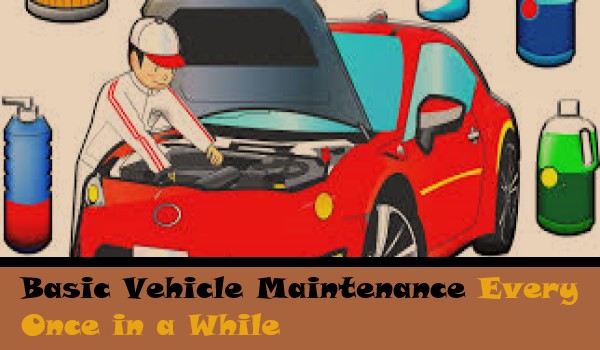No matter how well you take care of your car, certain things that aren’t on the basic maintenance schedule are bound to give out or need service from time to time. While components like these aren’t technically “wear items” in the same way that tires and brakes are, they will prove some of the first actual failures in need of repair. And that’s what it’s about from here on out; shifting focus from preventing problems to fixing them when they happen.
In fact, this topic could fill an entire book in and of itself. But for now, we’re going to discuss repairs that anyone with enough experience to change oil or do a brake job can accomplish – in theory, anyway. These include replacing fuses and relays or replacing a headlight, taillight, or turn signal.
Doing some of these by yourself can help save some significant cash to offset the money you’re going to wind up spending on parts. Some parts cost practically nothing in terms of parts but it is a perfect DIY project because most of the cost of replacement is in labor just getting to the thing. Fuses are simple, and relays are no more complicated than fuses but require a bit more oomph to remove.
So, while this short article on repair is far from comprehensive in terms of everything that could break on your car, at least now you won’t have to wait around for the parts-counter guy to stand there while you replace your taillight in the parking lot.
Being consistent in the essential maintenance of your vehicle will keep you out of car accidents. This way, it will be possible for you to get affordable insurance plans for less than $100 a month.
Replacing a Fuse or Relay
The more electricity you pass through a wire, the warmer the wire gets; and the thinner that wire is, the hotter it gets for a given amount of electricity. You can think of fuses as “thin spots” in your car’s electrical circuits, designed to overheat and fail before anything else does. You can see the fuse element inside the plastic case; if it’s got a gap in the middle, the fuse is blown. Your car has two fuses “blocks.” The big one under the hood that handles the circuits in your vehicle that keep the car running and moving, like the starter, ignition system, cooling fans, and fuel pump. The in-car fuse block generally handles optional, minor, and in-cab systems like the power windows, interior lights, radio, and power seats.
A relay is kind of like a light switch but uses an electronic actuator instead of your finger to activate. Relays use a small power input from a low-voltage switch like the ignition key or vehicle computer to energize an electromagnet, which closes a circuit that supplies power to more amperage-hungry devices like the fuel pump, electric cooling fans, and ignition system. Your relays are little black, square boxes, and you’ll find them located in the under-hood fuse block. To replace a fuse, you need only locate the appropriate fuse using the diagram on the panel lid and pull it out with your fingernail or a small pair of pliers. Pulling a relay is a bit more difficult because it’s wedged in tighter. The best way to pull a relay is to slide a flathead screwdriver under it and twist the driver handle to lift it out slowly. Work your around the relay, and pop adjacent relays out if need be.
Replacing a Headlight, Taillight, or Turn Signal
Modern cars use small, replaceable headlight bulbs inside of acrylic headlight housings. These headlight bulbs plug-in from the back of the assembly and seal to the housing using a set of rubber grommets and O-rings. A plastic locking collar presses the bulb against the housing to keep water out. To replace the bulb in a typical setup, you’ll turn the plastic locking collar and push it a quarter-turn counter clockwise. Once you have the ring off the housing, simply wiggle the bulb backward and unplug it from the wiring harness. Installation is the reverse of removal; just make sure to install the locking ring on the new bulb before plugging it in. Don’t touch the glass of new bulbs with your fingers – the skin oil can cause premature failure.
Taillight removal and replacement are very similar, except for the fact that you’ll usually need to remove the taillight housing from the car to access the bulbs. You can generally find the nuts that secure the taillight housing behind the trim or carpet in your trunk; just pry the carpet or trim upward, being careful of any plastic clips. Apply gentle pressure on the carpet until the clips release, remove the taillight nuts and pull the housing outward. Many taillight bulbs lack the separate locking ring of the headlight bulb; in these cases, you’ll turn the plastic bulb housing itself a quarter-turn before removing the bulb. On most modern cars, the turn signal is integrated into the taillight housing. Sometimes the turn signal screws into a base like a household light bulb; other times, it plugs into the base or into the wire harness.
Another convenient coverage deal for people on a budget is low down payment car insurance because you only need to make a small upfront payment. You can get the insurance plan of your choice from reputable, cheap companies like Aflac Auto Insurance.

